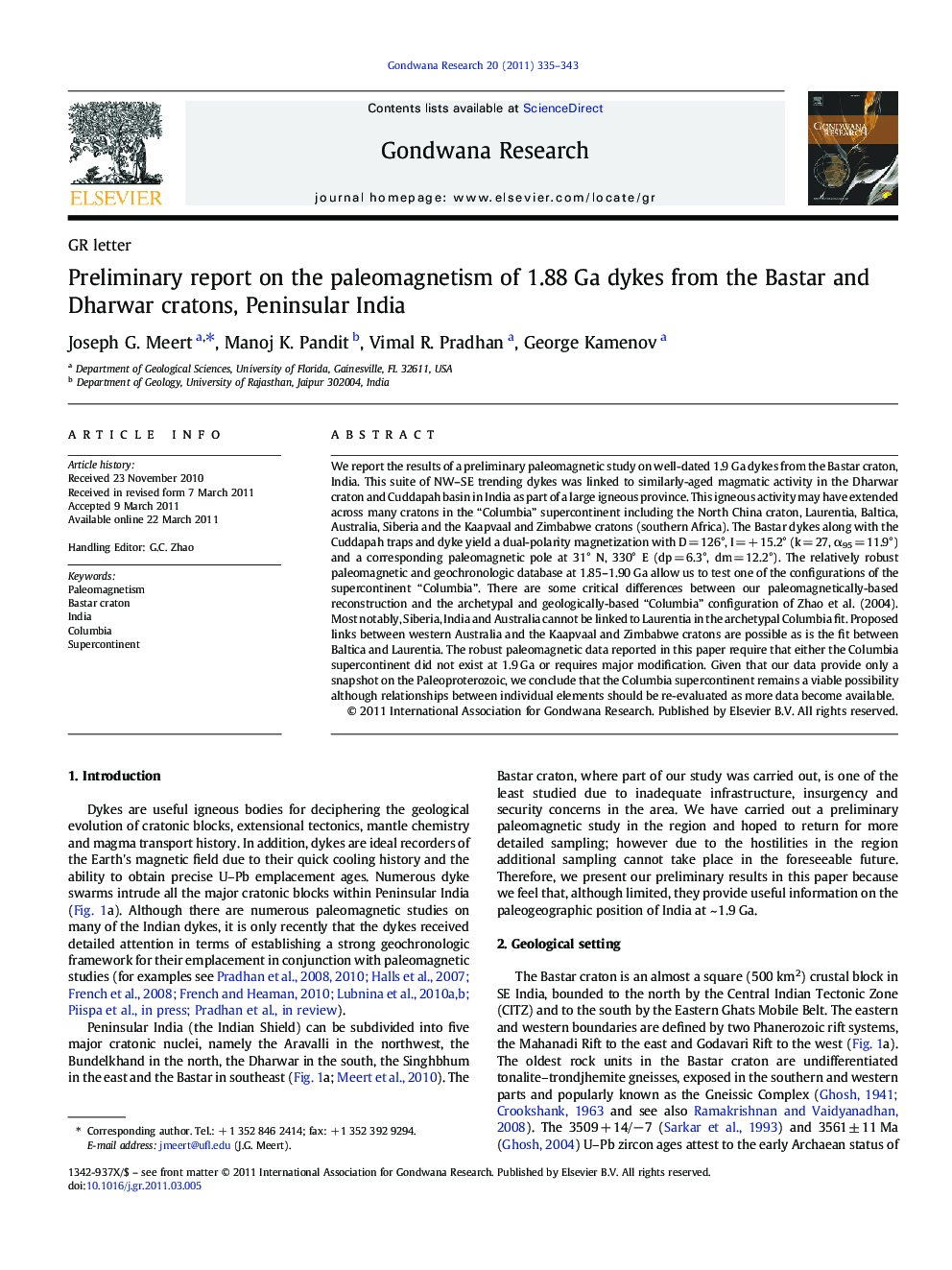| Article ID | Journal | Published Year | Pages | File Type |
|---|---|---|---|---|
| 4727698 | Gondwana Research | 2011 | 9 Pages |
We report the results of a preliminary paleomagnetic study on well-dated 1.9 Ga dykes from the Bastar craton, India. This suite of NW–SE trending dykes was linked to similarly-aged magmatic activity in the Dharwar craton and Cuddapah basin in India as part of a large igneous province. This igneous activity may have extended across many cratons in the “Columbia” supercontinent including the North China craton, Laurentia, Baltica, Australia, Siberia and the Kaapvaal and Zimbabwe cratons (southern Africa). The Bastar dykes along with the Cuddapah traps and dyke yield a dual-polarity magnetization with D = 126°, I = + 15.2° (k = 27, α95 = 11.9°) and a corresponding paleomagnetic pole at 31° N, 330° E (dp = 6.3°, dm = 12.2°). The relatively robust paleomagnetic and geochronologic database at 1.85–1.90 Ga allow us to test one of the configurations of the supercontinent “Columbia”. There are some critical differences between our paleomagnetically-based reconstruction and the archetypal and geologically-based “Columbia” configuration of Zhao et al. (2004). Most notably, Siberia, India and Australia cannot be linked to Laurentia in the archetypal Columbia fit. Proposed links between western Australia and the Kaapvaal and Zimbabwe cratons are possible as is the fit between Baltica and Laurentia. The robust paleomagnetic data reported in this paper require that either the Columbia supercontinent did not exist at 1.9 Ga or requires major modification. Given that our data provide only a snapshot on the Paleoproterozoic, we conclude that the Columbia supercontinent remains a viable possibility although relationships between individual elements should be re-evaluated as more data become available.
Graphical abstractFigure optionsDownload full-size imageDownload as PowerPoint slideResearch highlights► Present new paleomagnetic data from 1.9 Ga dykes from the Bastar craton. ► Test proposed Columbia supercontinental configuration. ► Position India at low latitudes in the Paleoproterozoic.
